The BVLGARI “Serpenti Factory” art initiative makes a dazzling appearance at the Qihao Art Museum in Beijing, marking the conclusion of the nearly two-year thematic celebration of the 75th anniversary of the brand’s iconic Serpenti collection. The Italian jewellery house BVLGARI launched the “Serpenti Factory” art initiative in 2023. Drawing endless creativity from the serpent, BVLGARI has gained continuous inspiration.
The craftsmanship and grand history embodied in the serpent symbol endow the Serpenti collection with inexhaustible creativity and innovative spirit. This initiative engaged contemporary artists worldwide to create works inspired by the serpent, showcasing the Serpenti collection’s enduring and ever-evolving character.

After traversing cultural and artistic centers including London, Madrid, Shanghai, Seoul, New York, Los Angeles, Dubai, Milan, and Tokyo, the “Serpenti Factory” art initiative returns to China following a two-year global art journey. The grand exhibition is held at the Qihao Art Museum adjacent to the BVLGARI Hotel Beijing and will be open to the public from July 19 to August 18, 2024.
The Qihao Art Museum, designed by renowned architect Tadao Ando, is hosting a public exhibition for the first time. As the final stop of this artistic journey, the Beijing station of the “Serpenti Metamorphosis” Heritage Art Exhibition is the largest in scale and features the highest level of artist participation in this global tour. The exhibition brings 18 works inspired by Serpenti, including a series of never-before-seen new creations.
Gathering important works from previous global tours, it presents artistic interpretations with a global perspective, paying tribute to the grand serpent imagery. This not only brings a perfect conclusion to the Serpenti 75th anniversary celebration but also extends the influence of this immortal glorious totem and evolving art forms to more fields.

Jean-Christophe Babin, CEO of BVLGARI, stated: “From ancient times to the present, the serpent totem has been engraved in human civilization with bold imagination and profound meaning, providing much inspiration for artistic and cultural creation.
BVLGARI’s Serpenti collection, created with serpent elements, also symbolizes a deep connection with the art world, and the ‘Serpenti Factory’ art initiative is an outstanding representation of this spirit. It promotes dialogue between Eastern and Western cultures, enhancing the cultural context formed by BVLGARI’s 140-year brand history.”
The “Serpenti Metamorphosis” Heritage Art Exhibition covers multiple areas that highlight the serpent totem, from brand heritage to craftsmanship, from multi-sensory technology to the 140th anniversary “Sustainable Brilliance” brand theme film presentation.
It creates a diverse artistic space around the serpent element, presenting five major chapters: “Tracing the Totem Legend,” “Following Winding Craftsmanship,” “Serpent Echo,” “New Serpent Tales – Tribute to Traditional Chinese Craftsmanship,” and “Serpent Imagery.”
These chapters trace the legendary metamorphosis of Serpenti in the interweaving of ancient and modern culture and art.
Chapter 1
Tracing the Totem Legend
Since ancient times, the snake totem has been closely connected to the progress of human civilization, symbolizing wisdom and the powerful force of rebirth in both Eastern and Western mythology. In 1948, Bulgari first applied it to the creation of brand bracelet watches, which became an instant global sensation, making the serpent totem a classic theme for Bulgari’s snake-shaped watches.
For over 70 years since then, Bulgari has continuously expanded the creative inspiration of the Serpenti series, applying it to jewelry and other product designs, making the serpent a signature design element of the brand, captivating countless celebrities and becoming a symbol of mystery and charm in the public eye.
Entering the exhibition venue, an artistic journey tracing the ancient totem gradually unfolds, documenting precious archival materials of bronze wares, statues, reliefs, manuscripts, and murals from around the world, interpreting the profound imprint of the serpent in the scroll of human civilization.
Cross-media artist Wu Junyong drew inspiration from ancient Greek mythology and Chinese prehistoric legends, creating the contemporary ink animation installation “Seeds of Light” based on the Rod of Asclepius and the snake-bodied creation gods Fuxi and Nüwa. It transforms through time and space, expressing eternal vitality in the endless cycle of the ouroboros.
Visual artist Wu Jian’an, drawing inspiration from “The Classic of Mountains and Seas,” created “Zhulong,” incorporating the mysterious snake and traditions from different civilizations into contemporary art.
The work uses the ancient Chinese snake-bodied mythical beast “Zhulong” as the main image, utilizing modern cutting and inlay aesthetics along with gold and silver coating techniques to form an intricate structure and effect, creating a gorgeous and fantastic world that inspires viewers to imagine the future of art.
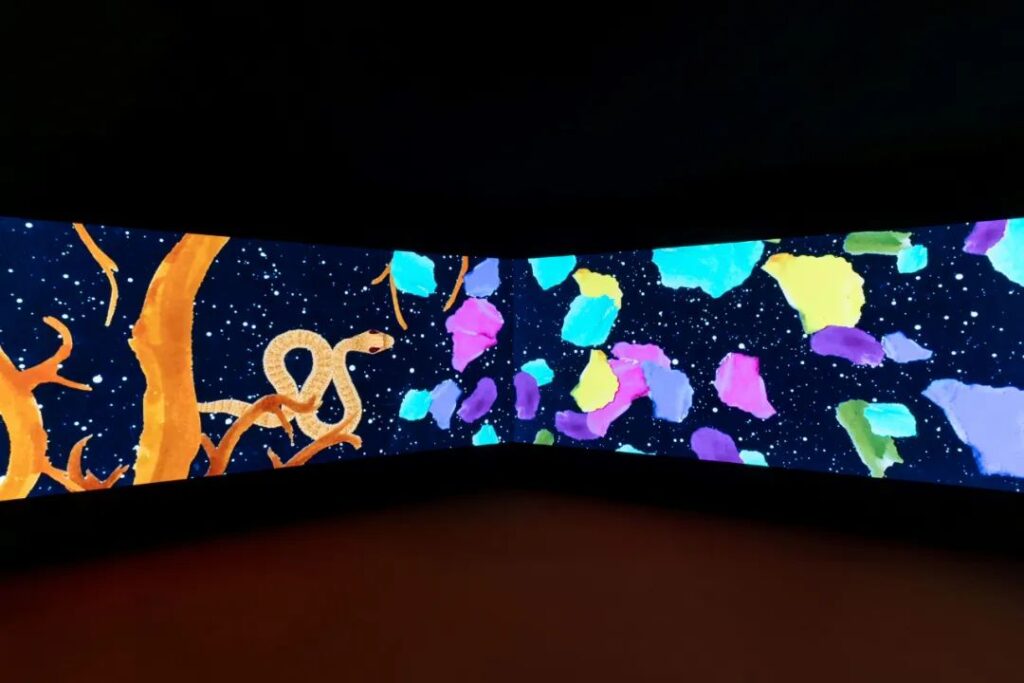
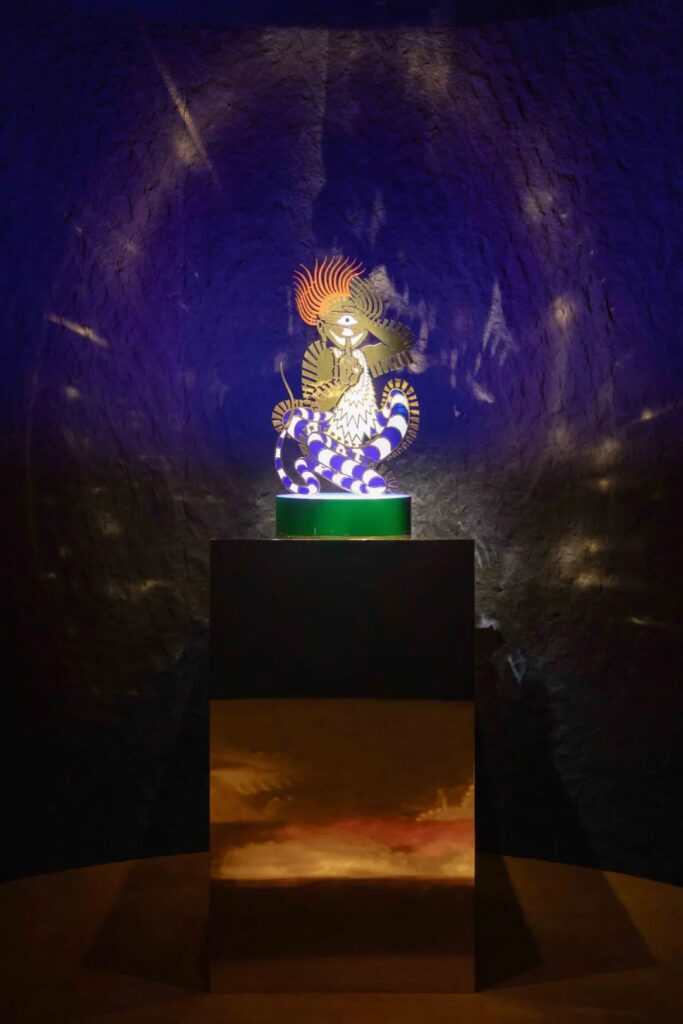
Chapter 2
Following Sinuous Craftsmanship – From Vintage Collections to Contemporary Masterpieces
Since the birth of the Serpenti series, Bulgari has formed an indissoluble bond with the serpent, a totem symbolizing rebirth, reinterpreting the serpent’s essence with flexible and varied creative approaches. In the second chapter of the exhibition, both the renowned vintage collection pieces and contemporary works of the Serpenti series are on display.
Relying on Bulgari’s relentless pursuit of exquisite craftsmanship and inexhaustible imagination, they use gorgeous gemstones, gold in different colors, and non-traditional materials such as colorful enamel to give the snake’s head, scales, and body countless variations.
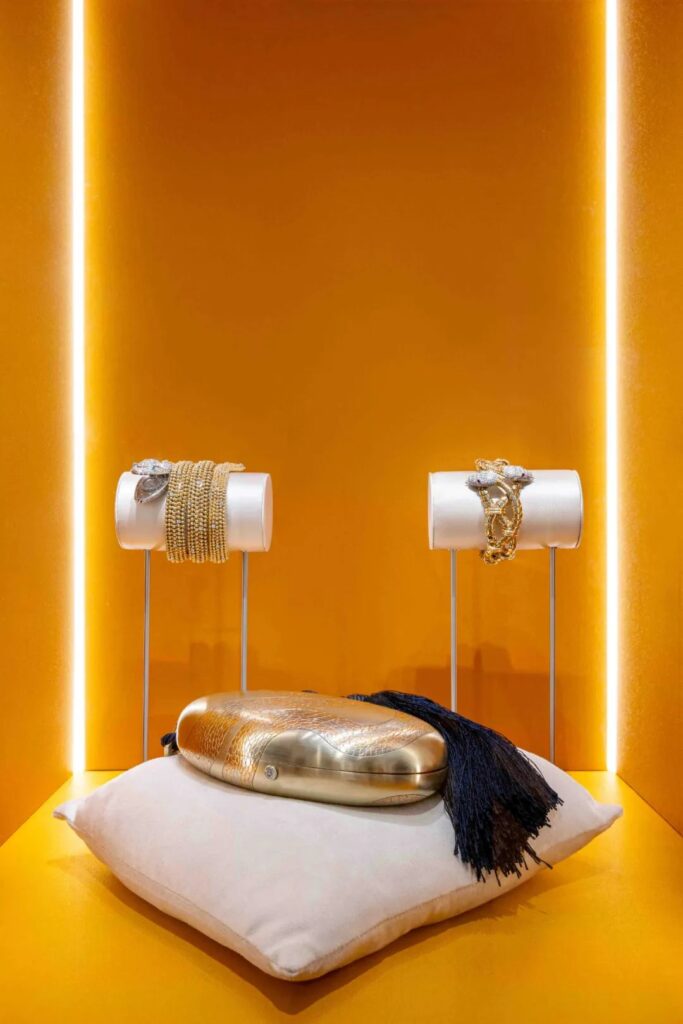
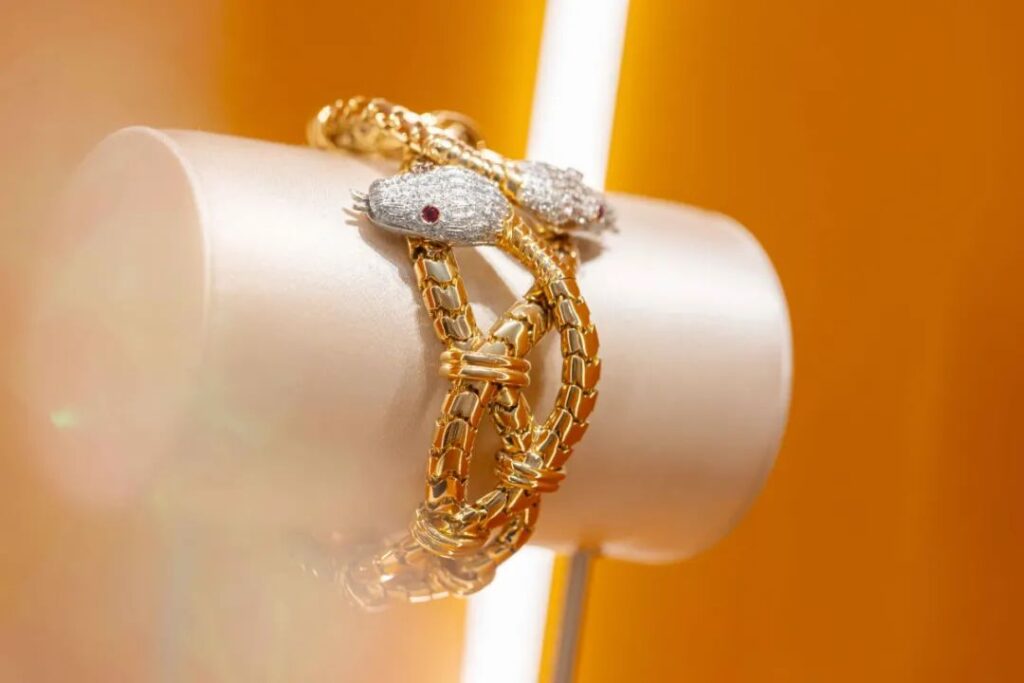
To pay tribute to the brand’s timeless classics, Bulgari has launched new and unique high jewelry pieces during this special celebration period, reflecting the myriad transformations of the serpent totem.
The Serpenti Heritage Turquoise necklace draws inspiration from the high-end watch worn by film legend Elizabeth Taylor while shooting the classic film “Cleopatra” in 1962, evoking the enchanting hues of the Nile River and aptly showcasing Bulgari’s outstanding heritage of excellence.
The Serpenti Floral Embrace Choker incorporates the dragon image from Chinese classical mythology into the Serpenti series, with a snake body crafted in gold coiling in layers, the head and tail adorned with diamonds, and decorated with pink tourmaline, amethyst, and emerald, adding a passionate and bold Italian style to the piece through exquisite craftsmanship and gorgeous gemstones.
The Serpenti Aquamarine Dive necklace features an ouroboros design in rose gold with a stunning aquamarine set in the center, combining traditional craftsmanship with modern design to pay homage to Bulgari’s Roman roots.
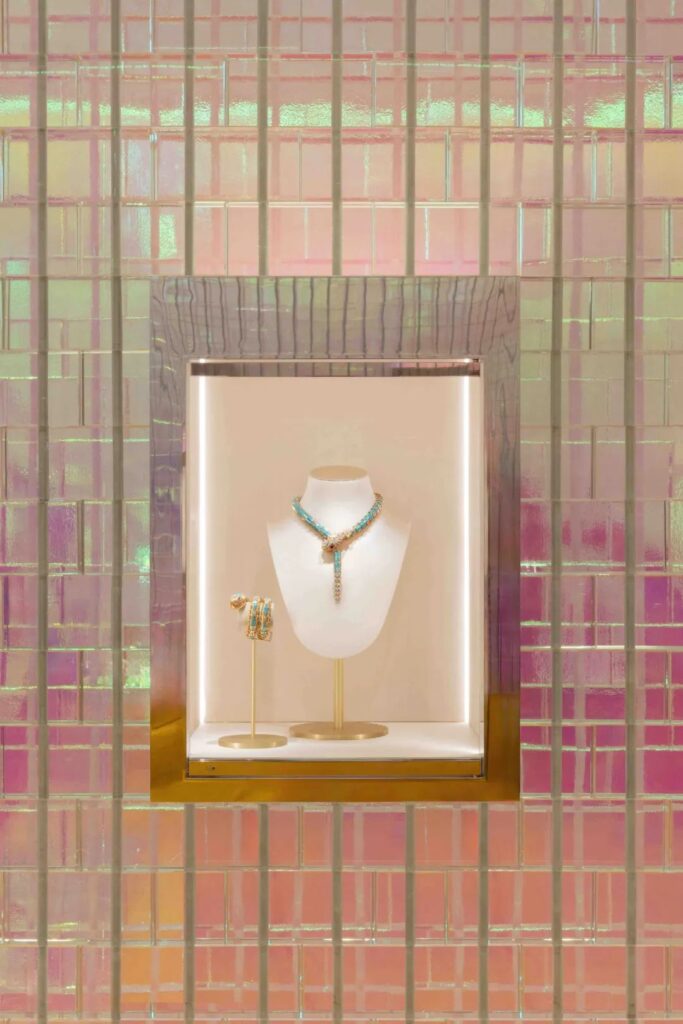
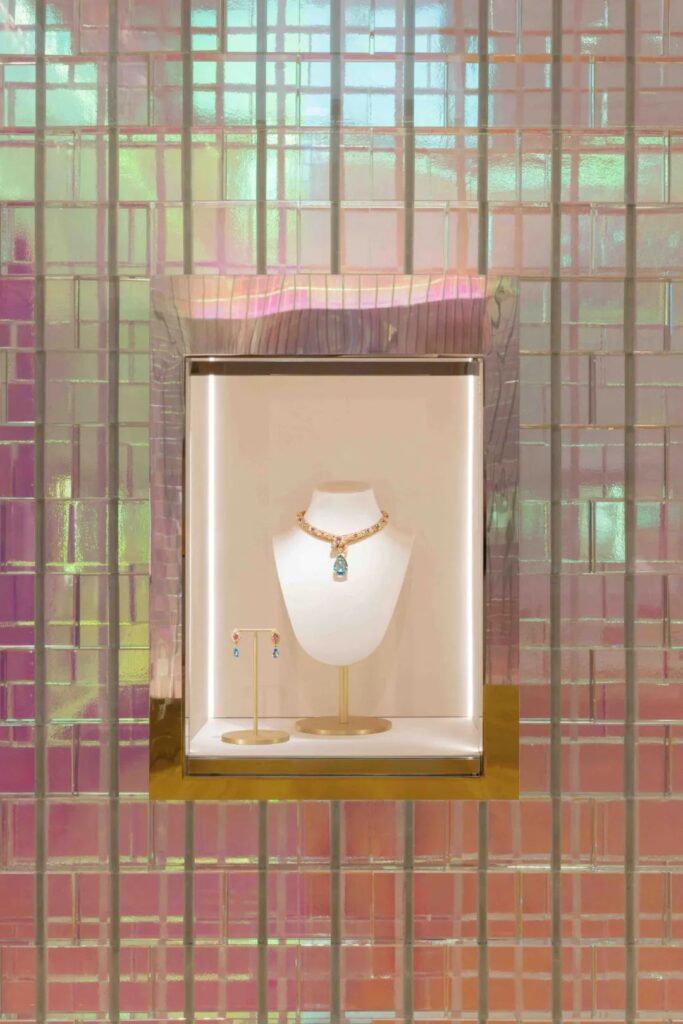
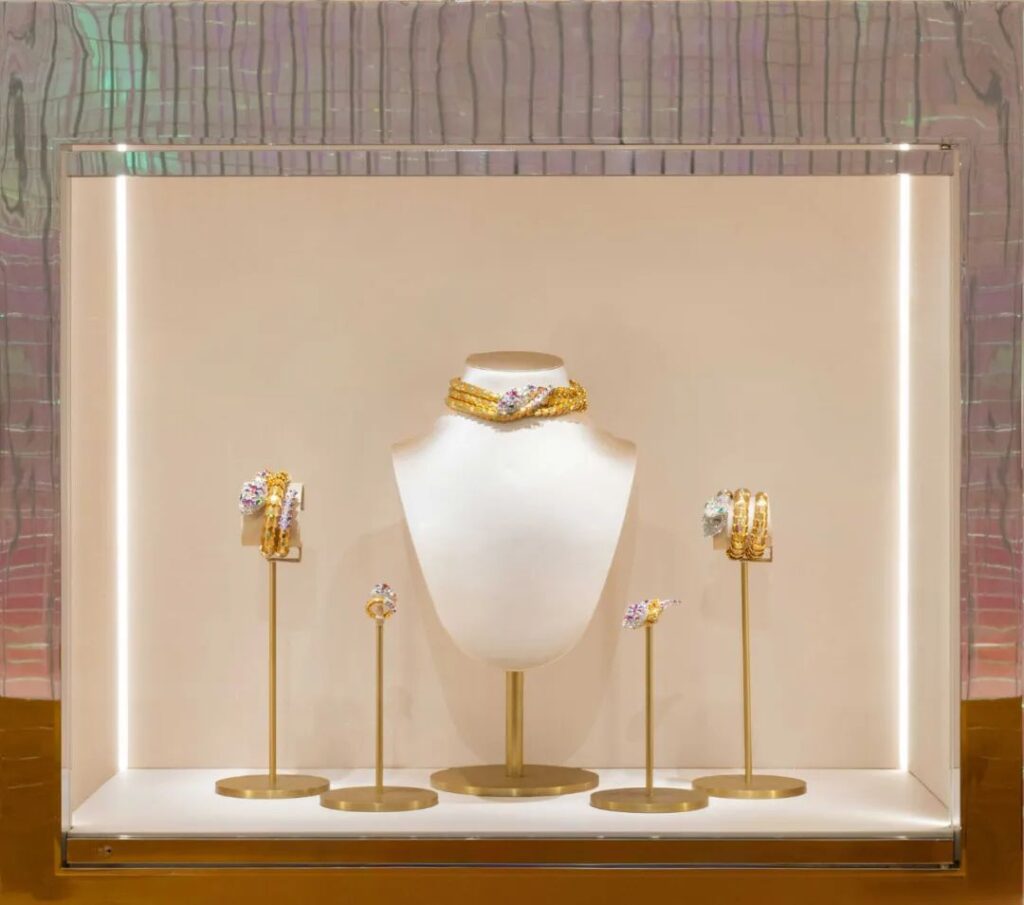
The Serpenti Tubogas series’ first cross-border art collaboration, the Serpenti Tubogas Tadao Ando Special Edition watch, is also on display. This special edition watch captures inspiration from Tadao Ando’s favorite theme – the natural beauty of the changing seasons.
It skillfully uses white mother-of-pearl, green aventurine, tiger’s eye, and pink mother-of-pearl to depict the beautiful scenery of spring, summer, autumn, and winter on the dial of the classic serpent-themed watch, shimmering brilliantly in the space designed by the architect.
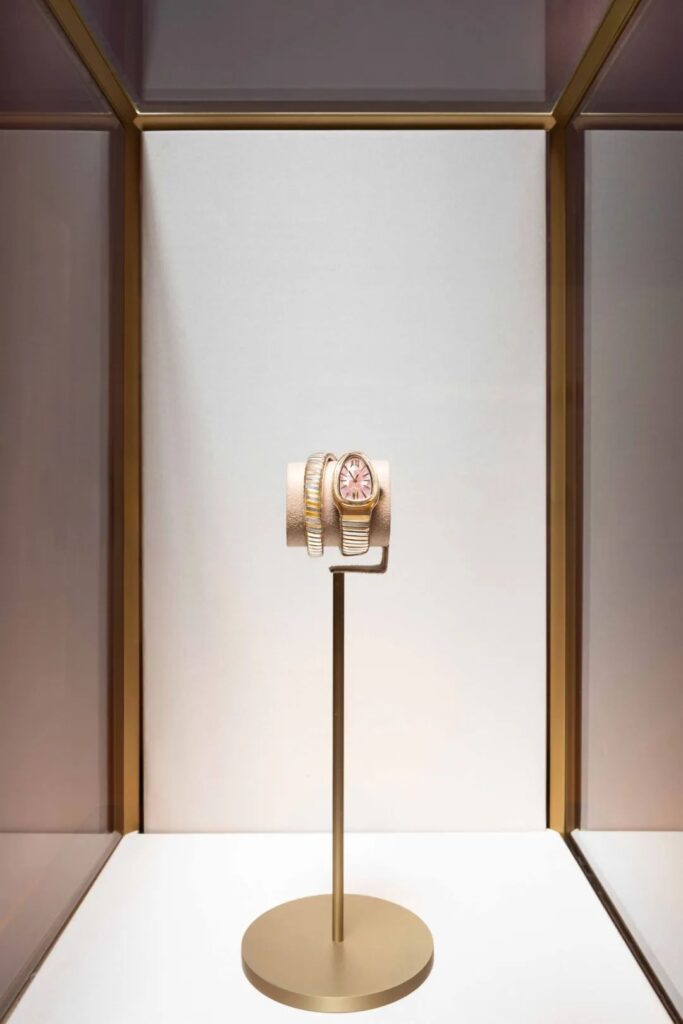
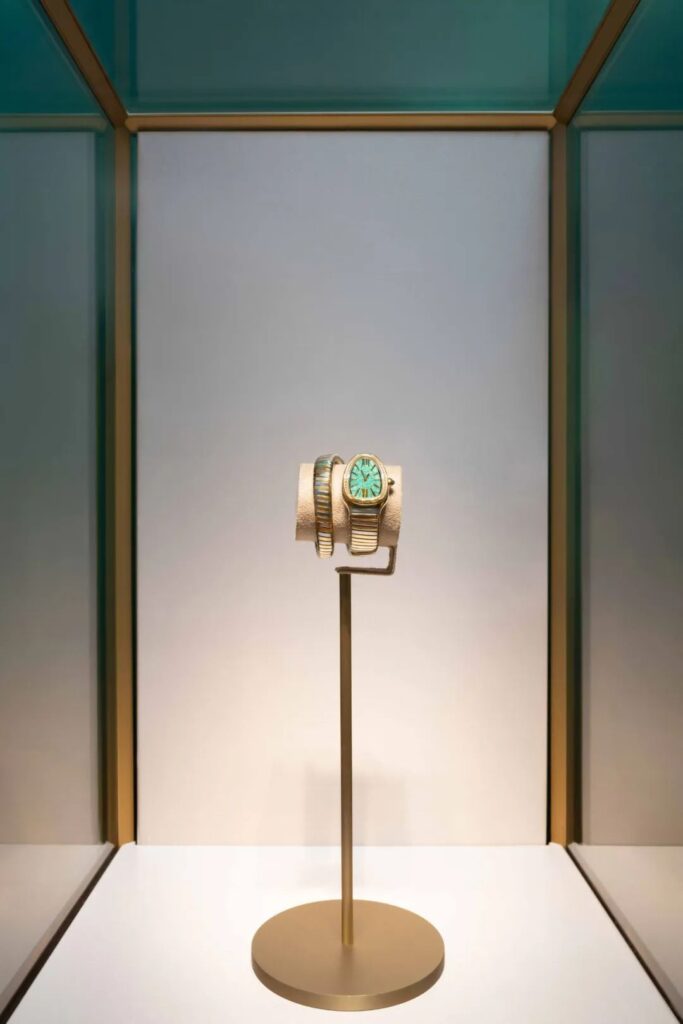
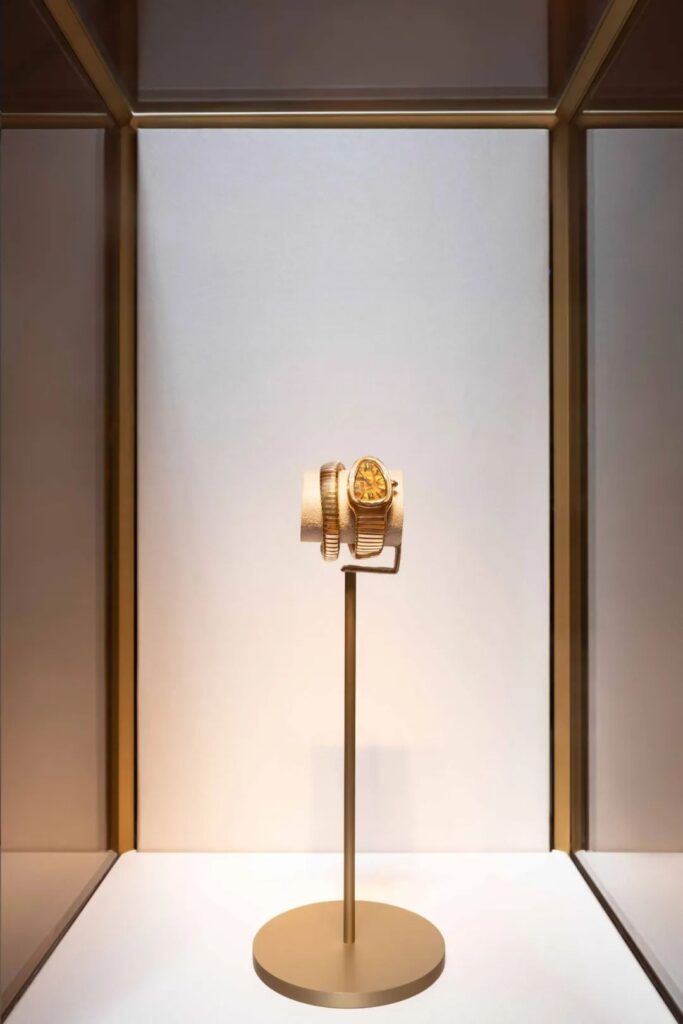
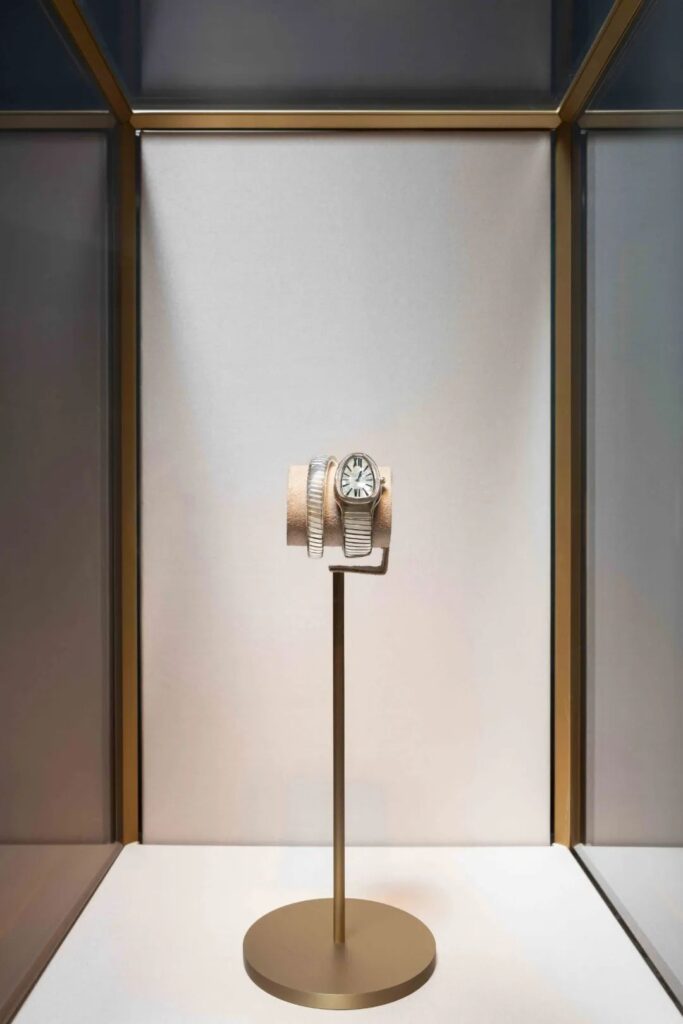
In this rare exhibition lineup, visitors can also admire the outstanding creative process behind the Serpenti Eternal High Jewelry Necklace. This necklace was designed to celebrate the brand’s 140th anniversary and is one of the most outstanding pieces in Bulgari’s new Aeterna Eternal High Jewelry collection.
The exhibition features a special themed video space, showcasing the creation process of this stunning artistic masterpiece through immersive screens. The Serpenti Eternal Necklace uses diamonds as the main protagonist to convey eternal meaning, with 7 D-color flawless pear-shaped diamonds totaling approximately 140.00 carats, echoing the brand’s 140 years of glorious history.
This admirable jewelry masterpiece once again demonstrates Bulgari’s profound expertise, marking a new breakthrough in craftsmanship and design, and embarking on a new journey starting from its 140th anniversary.

As the exhibition progresses, visitors will appreciate the sculptural work “Metamorphosis – Endless Cycle” by artist Zhou Li, created with stainless steel and stone. This work showcases the past, present, and future of the serpent totem through an engaging form.
In the piece, the combination of stainless steel and emerald presents a unique texture, while the interlocking curved lines highlight more layers, echoing the continuous metamorphosis and rebirth of the natural world.
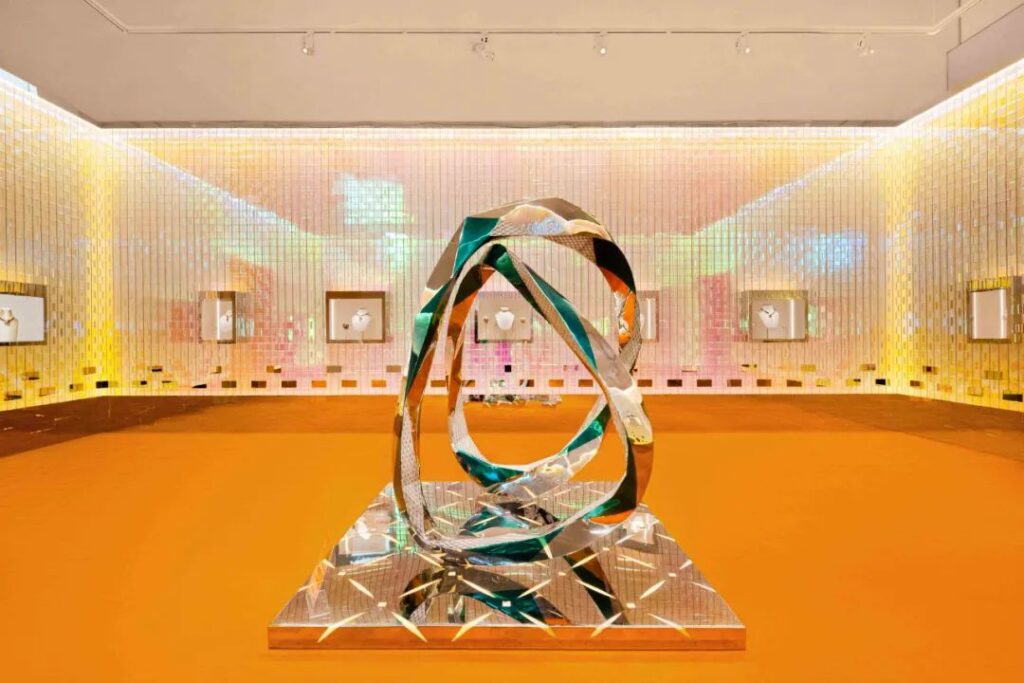
Chapter 3
Serpentine Echoes
As visitors continue through the exhibition hall, Chinese artist Liu Jiayu interprets the transformation and rebirth of the serpent with her video installation “Spiritual Light and Flowing Shadows.” Snake-shaped sculptures fixed on the wall undergo layer-by-layer transformation with dynamic video projections, representing the spirit of continuous exploration and change in the flow of time.
Italian artist Quayola merges Bulgari’s iconic serpentine elements with modern algorithms to create the mechanical milling installation “Sculpture Factory: Serpentine.” Using large industrial robots for on-site carving, he creates geometric patterns inspired by the serpent form, initiating a dialogue between history and modernity.
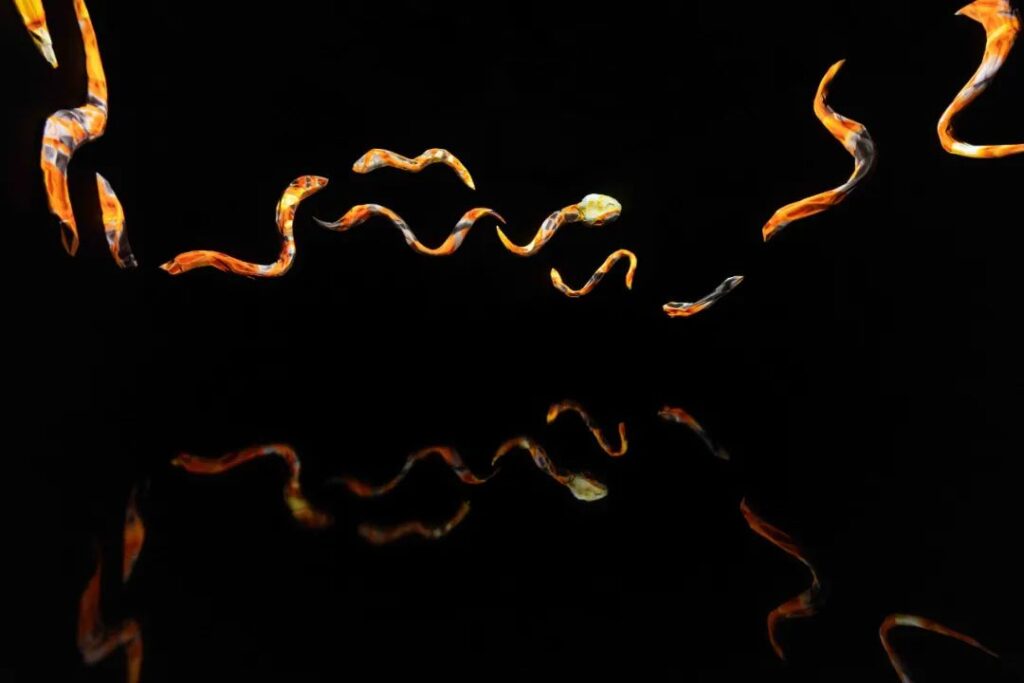

Chapter 4
New Narratives of the Serpent – Paying Tribute to Traditional Chinese Craftsmanship
To pay homage to traditional Chinese craftsmanship, Qian Lihuai, a Chinese bamboo weaving intangible cultural heritage inheritor and artist, uses the ancient traditional technique of bamboo weaving to create the abstract sculptural work “Celestial Serpent.”
The bamboo woven structure expresses the agility and nimbleness of the serpent, while the sharp turns echo the aesthetics of jewelry cutting. Four young Chinese artists from the Central Academy of Fine Arts – Chen Pengpeng, Jiang Ruiying, Qi Le, and Zheng Jiayan – respond to the traditional craftsmanship that creates the serpent through contemporary methods such as video and installations.
They employ traditional rope knotting and weaving techniques, paper-cutting art, and other methods to showcase the eternal iteration of artistic innovation, continuing the legend of the serpent through avant-garde creations.
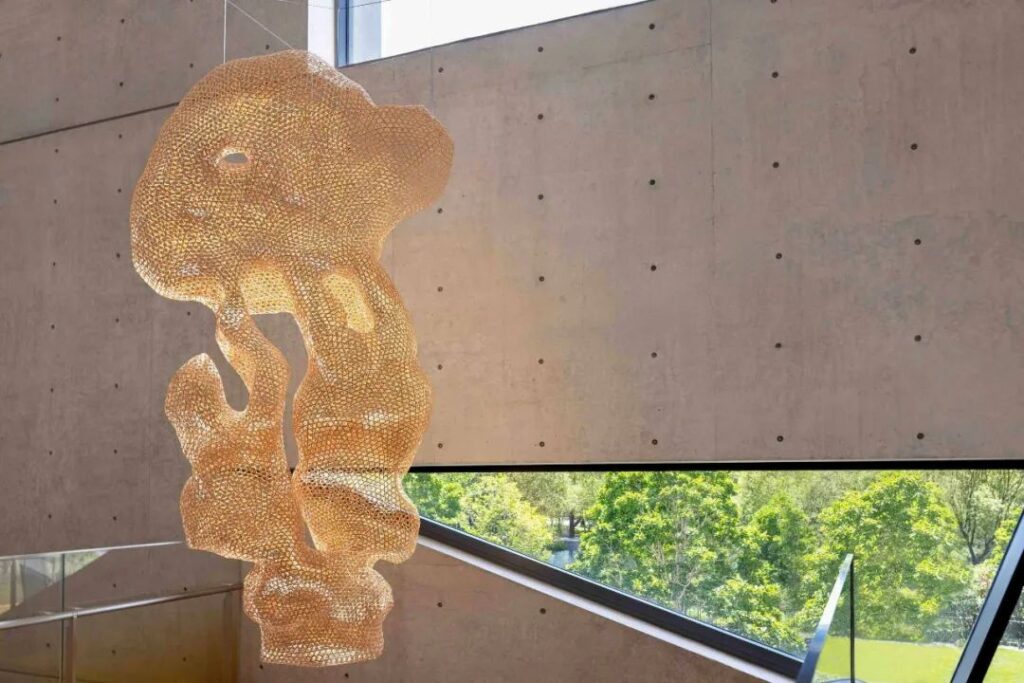
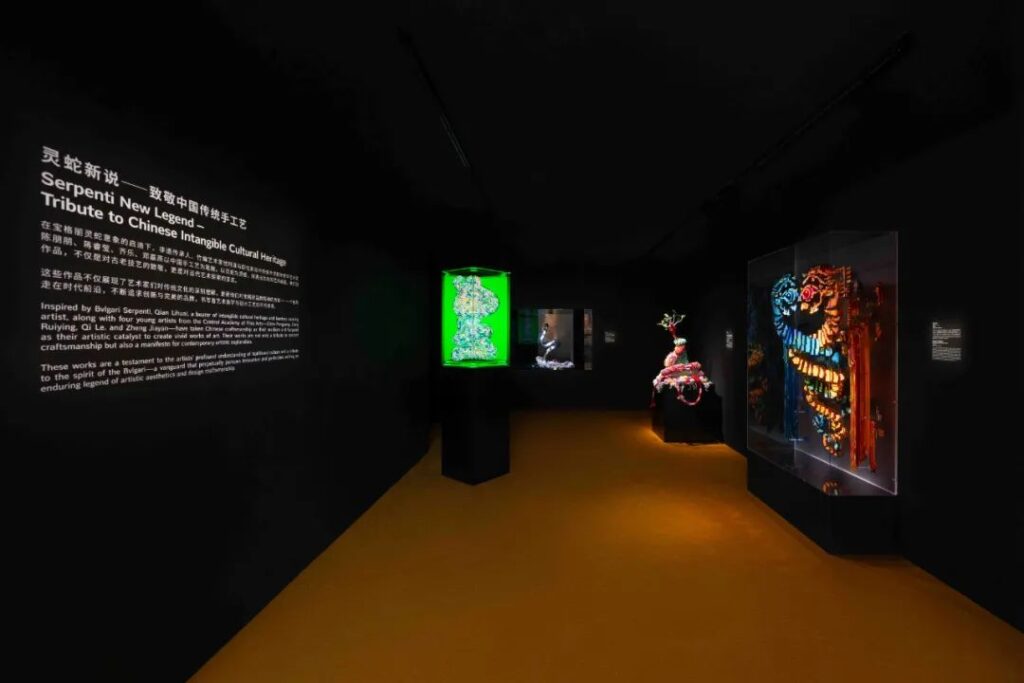
Chapter 5
Serpentine Imagery
As visitors continue through the exhibition hall, they will encounter another group of artworks. Visual artist and director Yang Yuanyuan creates the video work “Circle of Life” based on the ouroboros, interweaving dreams of the earth, forests, vortexes, and tree rings to express the concept of universal circulation and eternal renewal.
Artist Daniel Rozin, inspired by the golden snake scales of the Serpenti series, creates an interactive wall installation “Serpentine Scale Mirror”. Through clever manipulation of mechanical movements, he brings materials to life, reflecting the audience’s image and showcasing the resonance between the artist and Bulgari in their creations.
Artist Jae-Eun Choi’s work “Morning Dew Encounter” illuminates the exhibition space with warm-toned walls and a saffron-colored carpet, depicting the moment of dawn when darkness recedes and morning light spreads, with a golden serpent gliding elegantly, conveying endless energy.

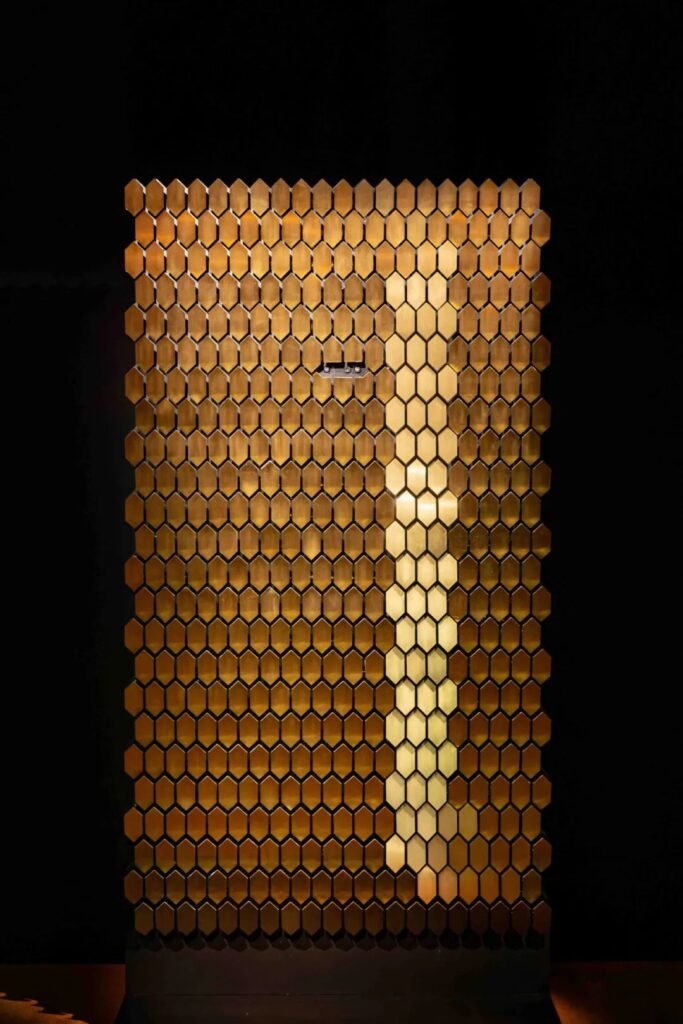
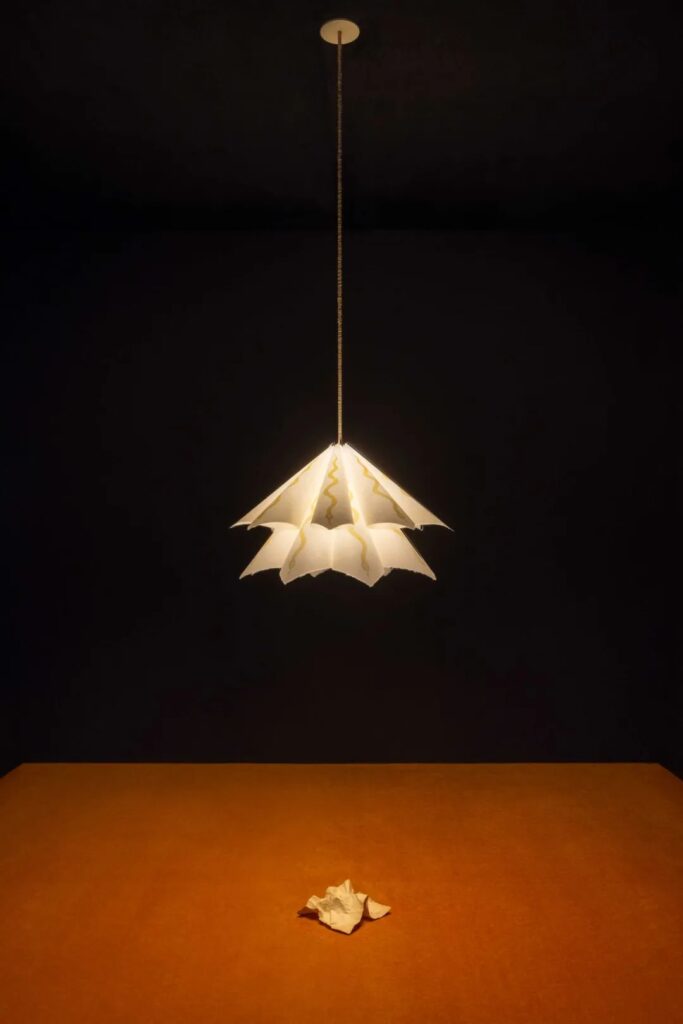
Inspired by the snake head and double-eye design of the Serpenti series bags, artist Shan Liang creates the sculptural work “Baby Ball Python”.
This sculpture transcends the dimensions of aesthetics and the realm of modern realism, offering endless imagination to viewers. Hong Seung-Hye presents a set of wall installations with a humorous approach, expressing the rich metaphors of the serpent through a unique artistic language, responding to the symbolic meaning of the Serpenti series works.
Utopic Arabia’s “Serpentine Odyssey” leads viewers through time and space, tracing the mythological origins of the serpent totem and exploring the eternal connection between people. Cate M Mercier’s sculptural works “Python Head” and “Mysterious Serpent”, shaped in clay and finely carved in bronze, explore the rich symbolic meanings and powerful evolutionary capabilities of the serpent.
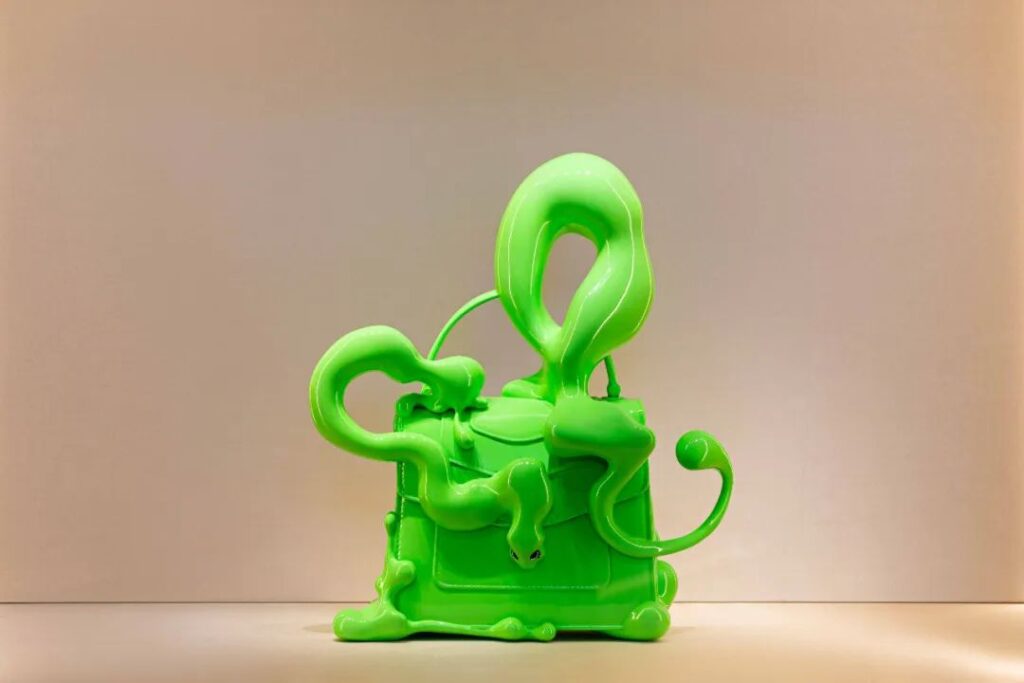
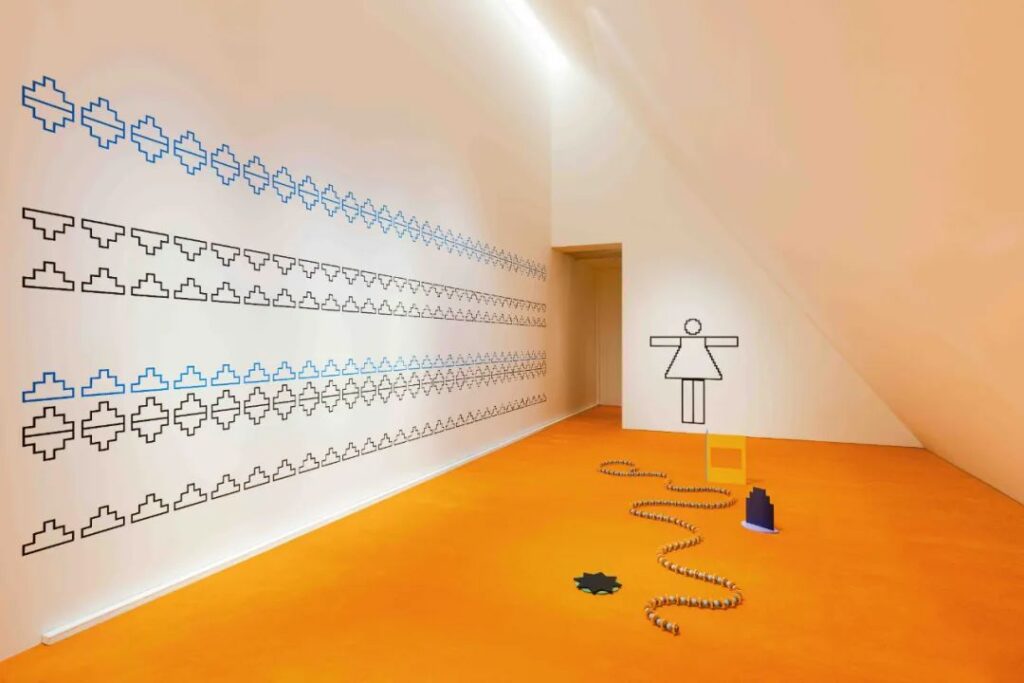

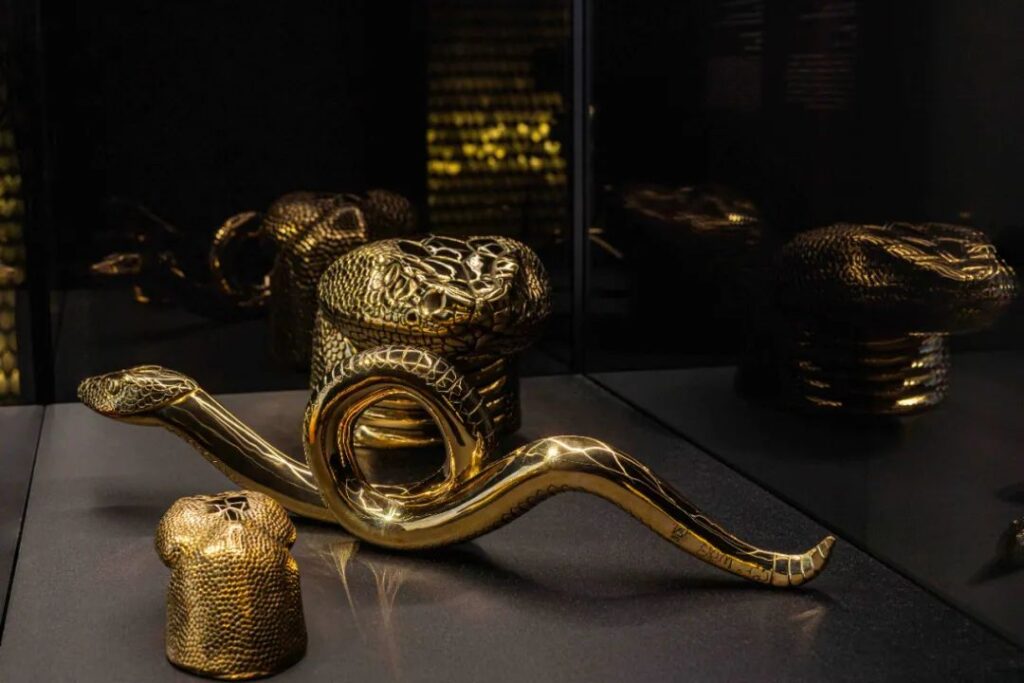
The Bulgari “Serpenti Eternal Transformation” Treasured Art Exhibition will be open from July 19 to August 18, 2024, at the Qihao Art Museum in Beijing, inviting guests to immerse themselves in the immortal charm of the serpent and embark on an endless journey of exploration and innovation.
BVLGARI’s ‘Serpenti Factory’ Art Initiative Culminates in Grand Finale in Beijing
Tweet





